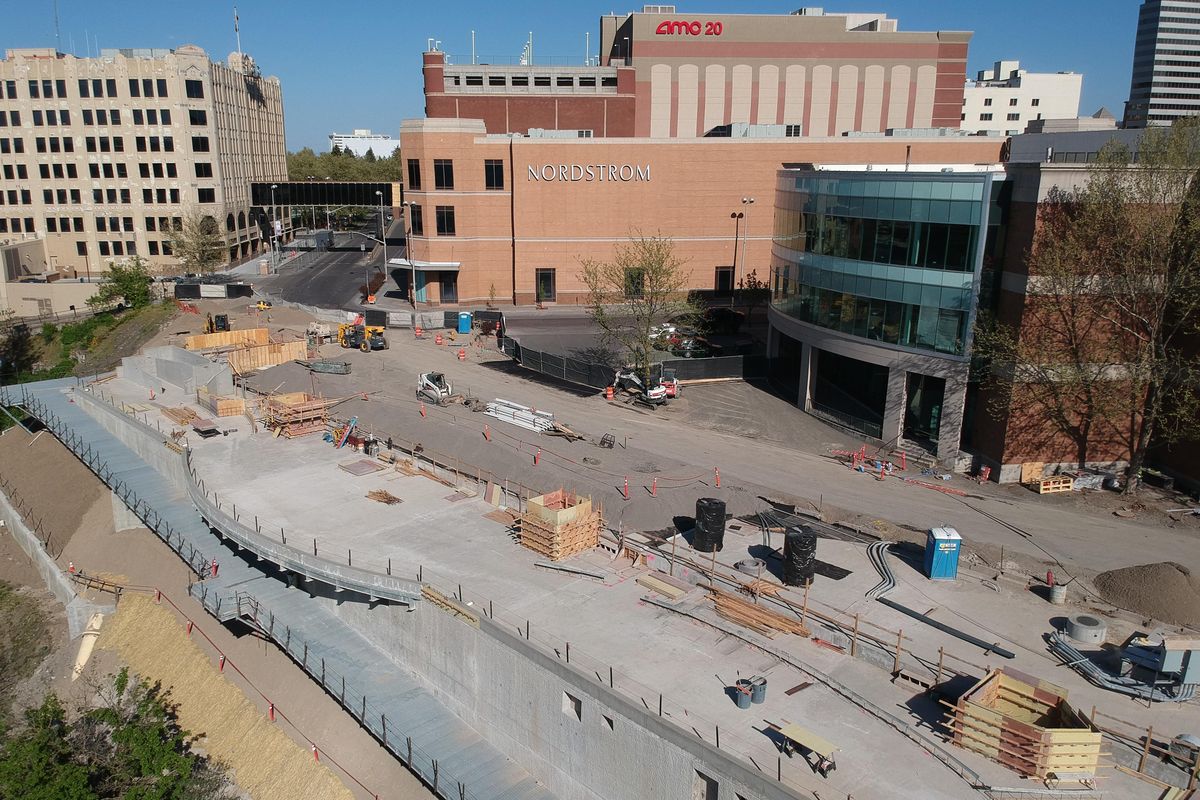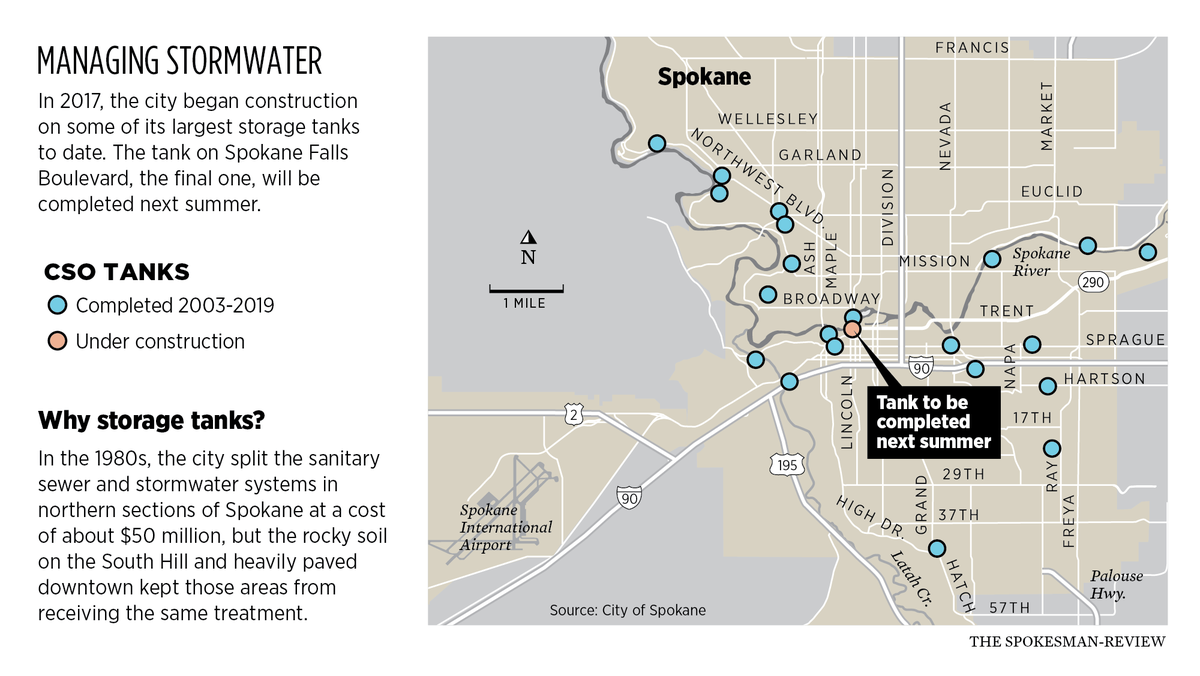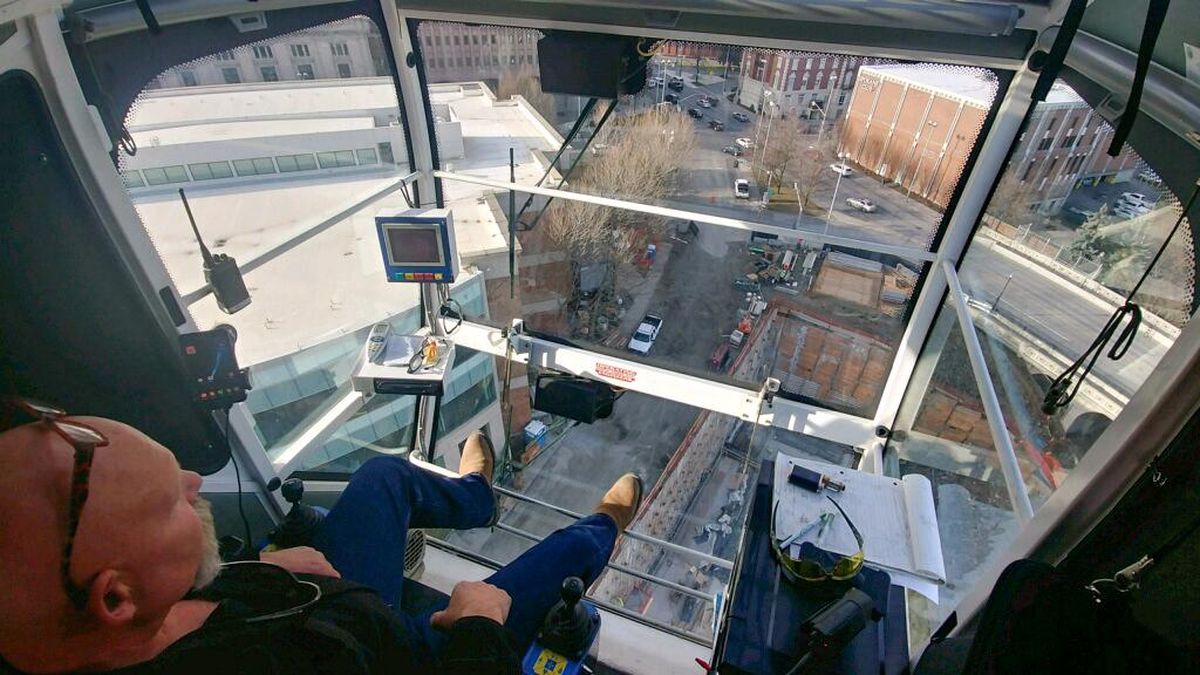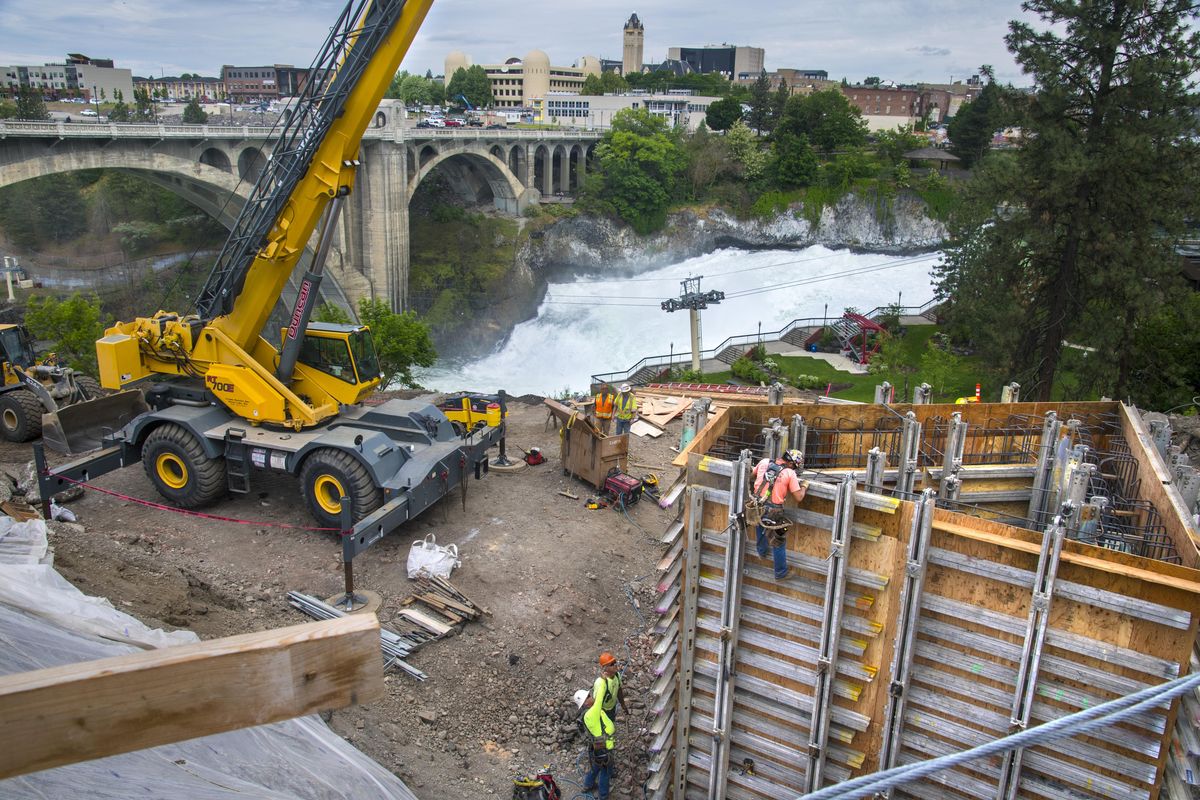Stormwater tank in downtown Spokane may cost an additional $2 million, won’t be online until summer
Crane operator Wally Forbush of Garco Construction sits and waits for his next request to move something at the construction site of the massive sewer overflow tank being built on the bank of the Spokane River next to the Spokane Falls, shown Friday, Mar. 30, 2018. (Photo by Jay Stotts / SR)
The massive 2 million-gallon stormwater tank that has rerouted traffic behind the Spokane Library for more than two years will be completed next summer, and could cost utility ratepayers $2 million more than initially planned.
The Spokane City Council earlier this month approved a request that brought the full price of the tank to $33.3 million. Some of the additional costs are being chalked up to the logistical problem of hanging a massive concrete tank on a hill, but nearly $1 million of the potential overrun is because of the design of the public plaza on top of the tank exceeding initial cost estimates.
“We weren’t at 100% design. It was an estimate,” Marlene Feist, city spokeswoman who has also worked in the Utilities division throughout the stormwater project, said about the plaza. “When we finally put in all the elements, it was more.”
The work is being overseen by Garco Construction, which has also been in charge of the U.S. Pavilion redesign, the University District Gateway Bridge and the Spokane Transit Authority bus barn, which will accommodate the service’s new fleet of electric buses.
The tank off of Spokane Falls Boulevard is the last structure slated for completion in a five-year construction project. When finished, the system will be capable of capturing millions of gallons of stormwater that would otherwise spill into the Spokane River during heavy rains and snowmelt. The initiative called for building the tanks in areas of the city’s water system where sewer and stormwater runoff combined to run to the treatment plant and separation of the pipes was infeasible.
Projects are being funded from a variety of sources, including some grants and loans from state agencies. The largest portion is coming from the sale of so-called “green bonds” in 2014, raising $200 million for both the stormwater tanks and new treatment membrane technology at the Riverside Park Water Reclamation Facility that will be operational in 2021.
The bonds are being repaid with a portion of the bill collected from the city’s utility ratepayers. Those rates for water, sewer and trash services are set to increase 2.9% next year as a result of a three-year cap on rates approved by the City Council and Mayor David Condon in 2017.
The tank behind the library, which required the use of a towering crane to build and whose progress has been visible from the main floor of the branch for the past two years, is actually not the largest facility that has been built. The largest tank, in a lot to the west of KHQ-TV in downtown Spokane, is capable of holding 2.2 million gallons of water. The city built a public park on top of that tank.
The other downtown tank did not present the same issues as the one near City Hall, Feist said. A briefing paper to the City Council notes incomplete or inaccurate mapping of pipes and wires beneath Lincoln Street, including an undocumented sewer connection that had to be bypassed during construction. The ties used to ensure the tank would not tumble down the hill had to be made redundant, adding another $663,000 onto the project.
Other tanks had issues lurking beneath the surface, and the downtown tank isn’t the first to require additional money for completion. A tank in Liberty Park required the city to pile some dirt on the other side of Interstate 90, adding about $400,000 to that project. When digging for a project at Northwest Boulevard and TJ Meenach Drive, crews found an undocumented dumpsite, with cleanup adding about a quarter of a million dollars to that work.
Feist said the original budget for all the work was about $180 million, a figure that will likely climb to near $190 million when all the contracts are paid.
The tank behind the library will remain offline until crews can hook piping to it, Feist said. Workers will wait until the dry months to do so, because it requires a sewer bypass that could become easily inundated in the wetter months.
Because the tank is not yet connected to the system, there will continue to be untreated outflows into the Spokane River in the downtown area during the winter and spring, Feist said. Untreated water was flowing from the pipe Friday as this week’s snow melted with the arrival of warmer temperatures.
Over a three-month period ending in November, the most recent month for which overflow reports are available, 1.6 million gallons of untreated water have flowed out of the pipe into the Spokane River, according to city reports to the Department of Ecology.






